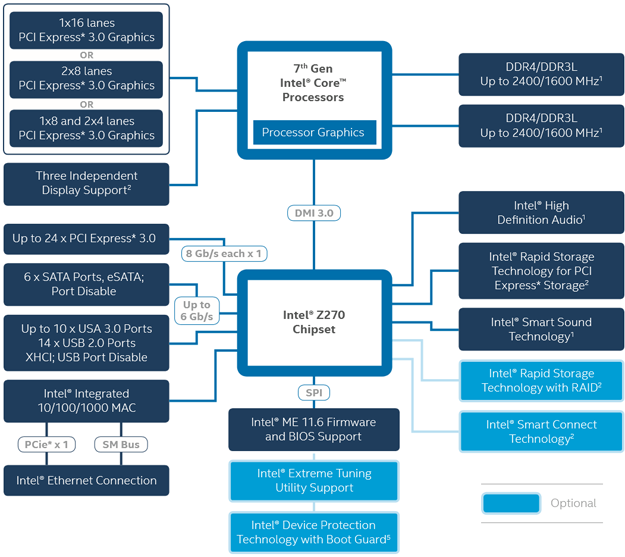Intel Z270 Motherboard Round-Up: MSI, Gigabyte, And ASUS Offerings For Kaby Lake
Today we are going to take a look at three popular Intel Z270-based motherboards targeted at power users and gamers, produced by enthusiast favorites Gigabyte, ASUS and MSI. The three boards we've rounded-up here cover a wide range of price points. The Gigabyte Aorus Z270X-Gaming K5 and ASUS ROG STRIX Z270F Gaming boards represent more mainstream segments, while the MSI Z270 XPOWER Gaming Titanium targets the ultra high-end. Although AMD's powerful Threadripper processors and Intel's upcoming 18-Core Skylake-X behemoth have gotten the lion's share of attention lately, more mainstream processors like Intel's Kaby Lake-based Core i7s and Core i5s sell in much greater quantities.
As such, we decided to take a look at these three Z270-chipset based motherboards which are designed specifically for Intel’s Kaby Lake family of processors, for more mainstream PC builds.
Before we dive into the motherboards, a quick refresher on Kaby Lake and the Z270 is probably in order. Intel's latest 14nm Kaby Lake architecture is not a vast departure from the previous-gen Skylake family. For our purposes, we’re working with a quad-core Intel Core i5-7600 LGA1151 processor, which operates at 3.5GHz. Versus a previous-gen Skylake part, it shares a similar 14nm process, core-count, on-board graphics, and cache structure. However, notable changes were made to SpeedShift with Kaby Lake to increase efficiency and improve performance when switching power states. Also, the multimedia engine got a shot in the arm as well and adds hardware acceleration for 4K HEVC 10-bit transcoding and VP9 decoding.
Intel Z270 Motherboard Chipset
The list of differences between the Z170 and Z270 chipsets is short as well. Each supports dual channel DDR4 memory, overclocking with unlocked SKUs, a variety of NVMe storage options, 6 x SATA 6, 10+ USB 3.0 ports and flexible PCIe lanes that can be set up in 1x16 or 2x8 or 1x8+2x4 configurations. However, regarding PCI-E specifically, Z270 supports 24x lane PCIE-3.0 versus the 20x supported by the Z170. One other notable difference, depending on your build intentions, is that the Z270 natively supports Intel’s relatively new Optane Memory Technology (though, support is possible on select Z170 boards via a BIOS update).
Now let’s take a quick look at each board and its BIOS environment before we run down our test rig setup. Then it’s onto the benchmarks before we wrap things up.







